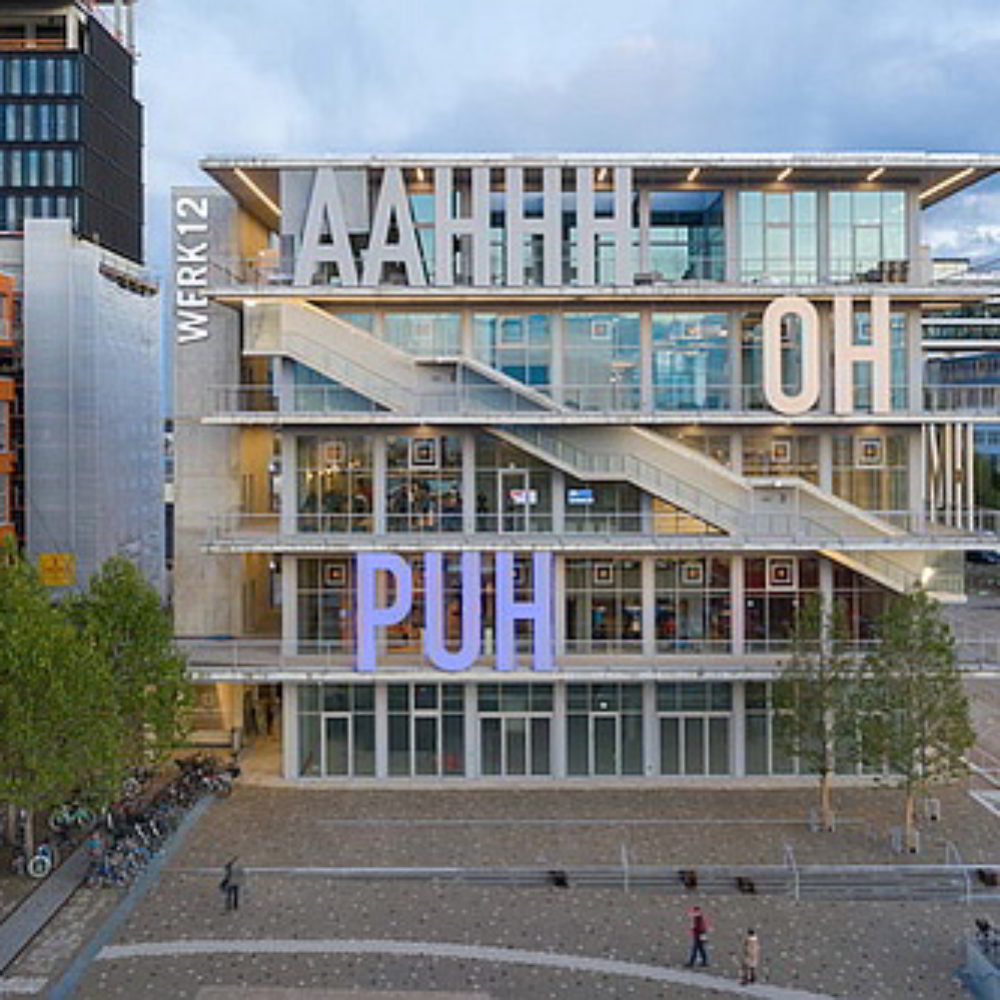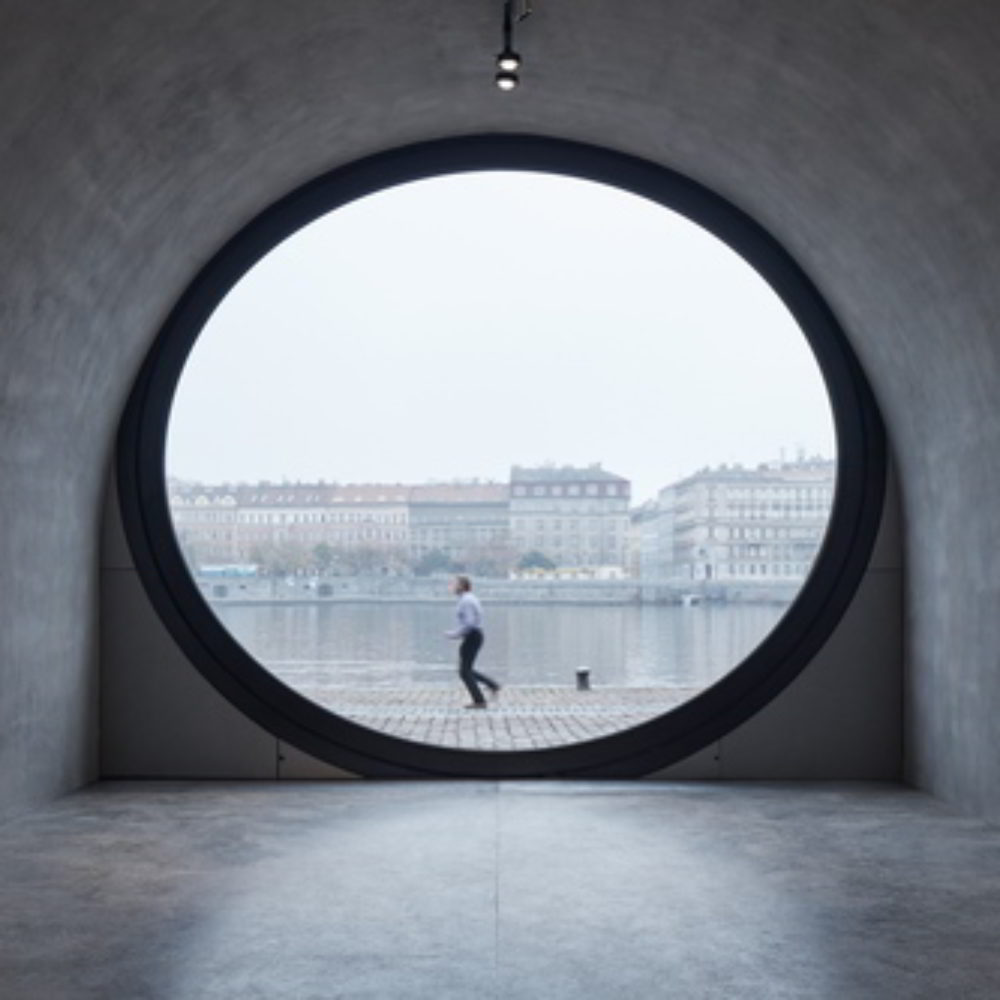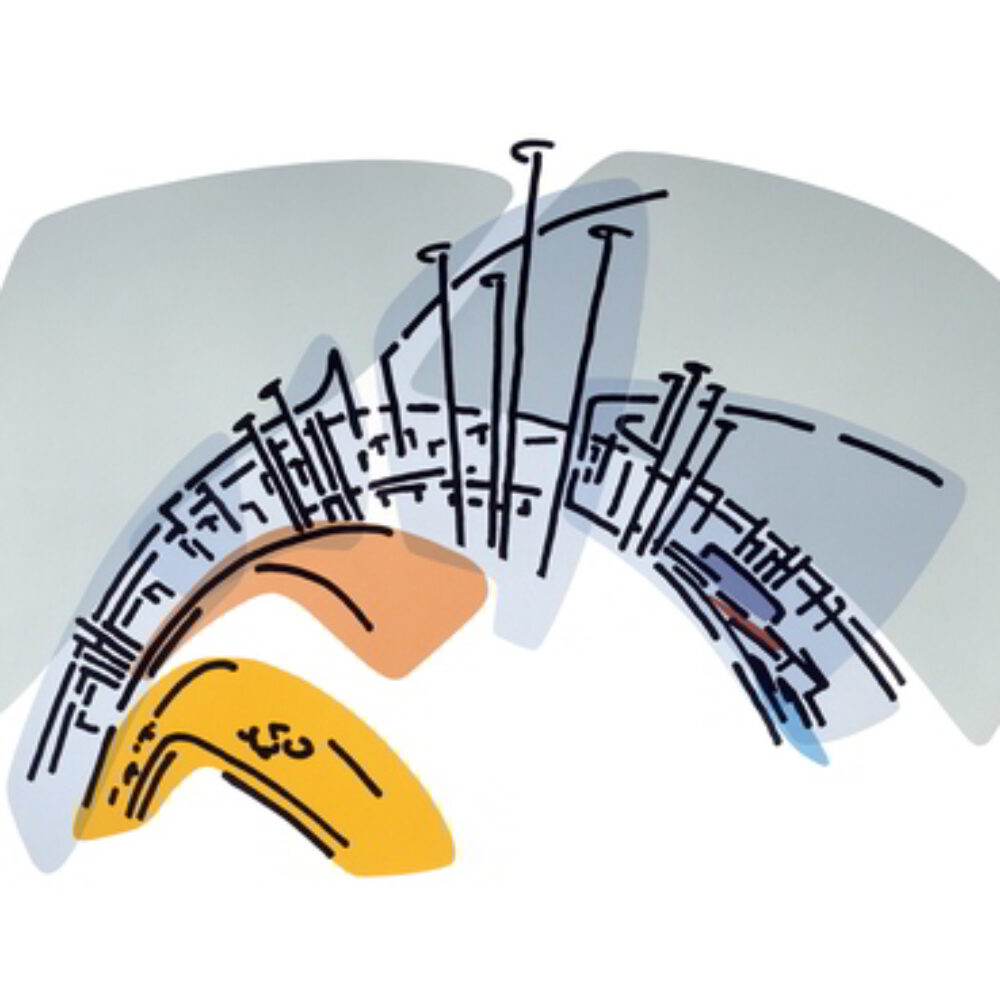Together! Die neue Architektur der Gemeinschaft ist eine Ausstellung des Vitra Design Museums, kuratiert von Ilka & Andreas Ruby und EM2N. Erneut und erweitert ist sie zu sehen im Museum für Kunst und Gewerbe Hamburg vom 20. November 2020 bis 14. März 2021.
28. Oktober 2020 | Özlem Özdemir
W
ie stark ist der Gemeinschaftsgedanke beim Bauen? In der Ausstellung Together! gibt es viel Material, um dieser Frage nachzugehen. Modelle, Filme und eine Cluster-Wohnung im Maßstab 1:1 zeigen Beispiele des Bauens und Wohnens im Kollektiv aus Europa, Asien und den USA. Mit enthalten ist auch die Geschichte der gemeinschaftlichen Architektur – von den Reformideen des 19. Jahrhunderts bis hin zur Hippie- und Hausbesetzerszene, die bekannt war für den Slogan „Make love, not lofts“.
Eingeleitet wird die Ausstellung mit Filmen über die historischen Protestbewegungen für Wohnraum. Hinzu kommt ein Ausschnitt von den ersten Kollektivprojekten. Die Phalanstères etwa, die Charles Fourier (1772–1837) als Bauvision entwickelt hatte, ähnelte im Grundriss dem Schloss von Versailles. Hinter herrschaftlicher Fassade verbargen sie Räume, wo man gemeinsam leben, lieben, arbeiten und konsumieren sollte. Von ähnlicher Art sind auch die anderen Beispiele: so die Ende des 19. Jahrhunderts im Tessin entstandene Kolonie Monte Verità, die Wohngenossenschaften der 1920er-Jahre, aber auch die Freistadt Christiania in Kopenhagen oder die Genossenschaft Karthago in Zürich. Fazit für die heutige Zeit: Leben in Gemeinschaft ist noch immer eine interessante Alternative für viele. Paare, Alleinerziehende, Singles und alleinlebende Menschen können profitieren: Das gemeinschaftliche Wohnen bietet mehr Möglichkeiten für Kontakte, aber auch zur Kostensenkung.
Und um diesen aktuellen Stand des kollektiven Bauens geht es im zweiten Teil der Ausstellung. Die Besucher erwartet eine Installation aus 21 großformatigen Modellen von zeitgenössischen Wohnbauprojekten. Integriert sind Arbeiten u. a. von einszueins architektur (Wien), Michael Maltzan Architecture (Los Angeles), pool Architekten (Zürich), Ryue Nishizawa (Tokio) und Heide & von Beckerath (Berlin). Sie zeigen, wie man mit begrenzten Gestaltungsmitteln eine ganz eigene Ästhetik erzielen kann. Und manche Projekte machen es besonders deutlich: Stadt und Wohnraum, Öffentlichkeit und Privatsphäre müssen nicht immer klar getrennt sein. Doch was für viele reizvoll oder aus Gründen der Vereinsamung gar rettend ist, ist anderen nur unbehaglich.
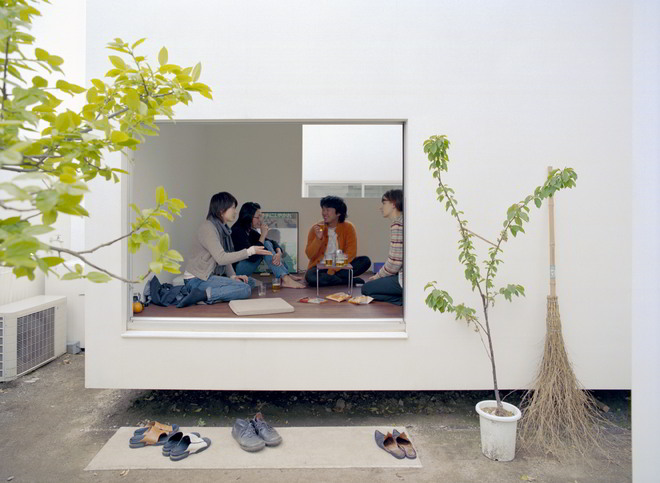
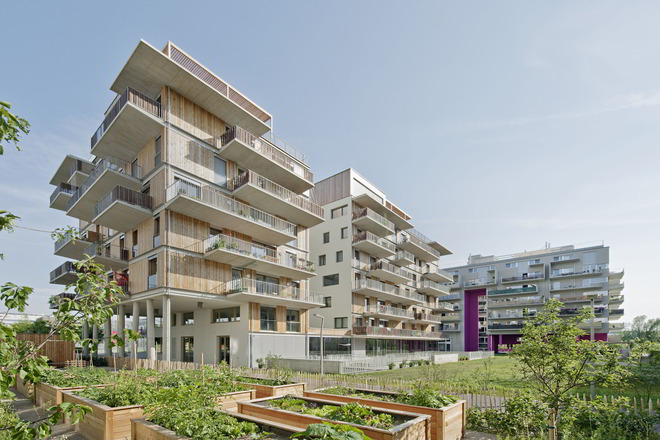
Im dritten Ausstellungsbereich wird es konkret: Ein 1:1-Modell einer sogenannten Clusterwohnung lädt dazu ein, gemeinschaftliche Bereiche und private Räume hautnah zu erleben. In Grundrissdarstellungen lässt sich nachverfolgen, wie das neue Wohnen in Gemeinschaft funktioniert. Fotografien von Daniel Burchard zeigen ferner acht Projekte aus mehreren Ländern. Sie dokumentieren andersartige Formen des Zusammenlebens, unterbreiten neue Wohnkollektive als Chance für Neukombinationen von Wohnen und Arbeiten, als Labor für gesellschaftliche Entwicklungen.
Schließlich beschäftigt sich die Ausstellung auch mit den ökonomischen und praktischen Seiten der neuen Gemeinschaftsarchitektur und stellt die Frage: Wie lässt sie sich umsetzen? Erklärungen erfolgen in Form von mehreren Projekten: die Sargfabrik in Wien, das Zwicky-Süd in Zürich, La Borda in Barcelona, R50 in Berlin und die Apartments with a Small Restaurant in Tokio. Diese Case Studies präsentieren sich in einem Raum à la Co-Working Space. Das ergibt einen passenden Rahmen für das, worum es geht: die finanziellen Vorteile von neuen Verbindungen zwischen Wohnen, Arbeiten und kulturell-öffentlichem Leben, wofür flexible Büros wie Co-Working Spaces bekanntlich geschaffen sind. So besteht auch das Zürcher Projekt Kalkbreite, neben den Wohnungen, teils aus Gewerbefunktionen und teils aus öffentlichen Einrichtungen. „Ein neues Stück Stadt“ nannte es sich 2006 noch als Vision und wurde 2014 realisiert. Darin enthalten ist ein Kino, ein verpackungsfreier Supermarkt, Restaurants und Cafés, Arztpraxen, diverse Büroflächen und ein Innenhof mit Kinderspielplätzen, der frei zugänglich ist.
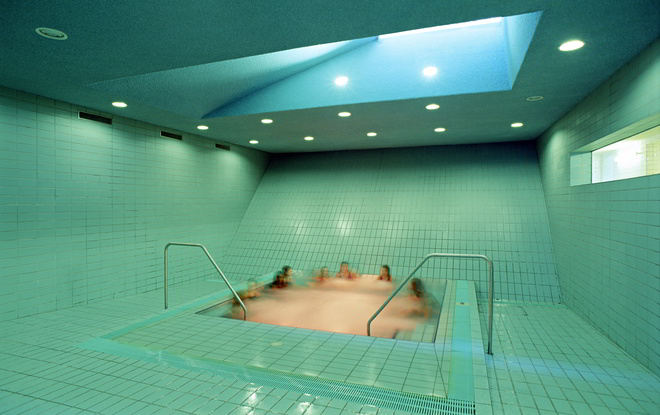

Sei es politisch, ökonomisch, psychisch oder sozial: Das Thema Wohnen und Wohnraum erfreut sich zunehmender Aktualität. Das Zusammenleben von Menschen jedoch ist, abgesehen von Familien- und Arbeitsleben, noch immer nicht weit genug ausgelotet. Sie sind Randerscheinungen und Sonderfälle der Stadt- und Baukultur. Die Ausstellung Together! demonstriert mit historischen Hintergründen und modernen Beispielen, wie attraktiv Bauprojekte mit kollektivem Esprit und Anspruch sein können und wie sie sich im kommerziellen Wohnungsmarkt behaupten. Indem sie das gegenseitige Bereitstellen von Räumen und Flächen praktizieren, sind sie ein Teil von Sharing Economy und Strömungen wie die bankenkritische Occupy-Bewegung.
Together! erinnert daran und fasst zusammen: Das gesellschaftspolitische Potenzial des Wohnens und Bauens war und ist spannend. Umso erstaunlicher, dass das Thema in der Szene der Architekturausstellungen noch immer selten ist. Zu sehen ist die von Ilka & Andreas Rubys und EM2N kuratierte Ausstellung im MK&G Hamburg vom 20. November 2020 bis 14. März 2021.
(Nachwort: Einen Ausdruck der gemeinschaftlichen Koexistenz hat das Museum für Kunst und Gewerbe auch dauerhaft zu bieten. Wer irgendwann Gelegenheit hat, sollte die Japanische Teezeremonie erleben, dargeboten im Teehaus Shōseian. Hier wird man Zeuge einer wertschätzenden Atmosphäre der Aufmerksamkeit, des Respekts gegenüber Objekten, Prozessen und Menschen. Hier kann man erleben, wie unabdingbar all dies ist für ein erfolgreiches Miteinander. Wie (überlebens)wichtig dieser Geist sein kann, zeigt sich gerade in pandemischen Zeiten wie heute.) ♦
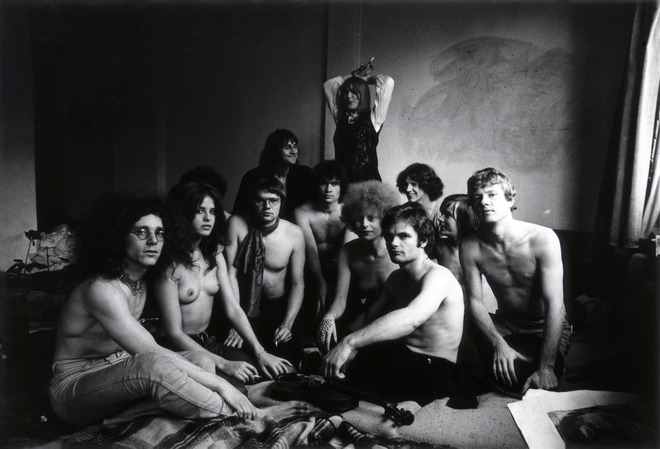
Zur Website von
Museum für Kunst und Gewerbe Hamburg
MK&G in Hamburg announces: Together!
Together! The New Architecture of the Collective is an exhibition of the Vitra Design Museum, curated by Ilka & Andreas Ruby and EM2N. Once again, and in an extended version, it can be seen at the Museum für Kunst und Gewerbe in Hamburg from November 20, 2020, to March 14, 2021.
How strong is the idea of community when it comes to building? In the exhibition Together!, there is a lot of material to pursue this question. Models, films and a cluster apartment on the scale of 1:1 show examples of collective building and living from Europe, Asia and the USA. Also included is the history of collective architecture – from the reform ideas of the 19th century to the hippie and squatter scene, which was known for its slogan „Make love, not lofts“.
The exhibition starts with a series of films about the historical protest movements for housing. Besides, there is an excerpt of the first collective projects: for instance, the Phalanstères which Charles Fourier (1772-1837) had developed as a vision of architecture, resembled the Château de Versailles in its ground plan. Behind a stately façade, they concealed rooms where people were to live, love, work and consume together. (Part of the concept was free love.) The other examples are of a similar kind: the Monte Verità colony in Ticino at the end of the 19th century, the housing cooperatives of the 1920s, but also the Freetown Christiania in Copenhagen or the Carthago Cooperative in Zurich. Conclusion for today: Living in community is still an intriguing alternative for many. Couples, single parents, singles and people living alone can benefit from it: communal living offers more opportunities for contact but also cost reduction.
And this current state of the collective building is the subject of the second part of the exhibition. Visitors can expect an installation consisting of 21 large-format models of present-day projects. Integrated are works by einszueins architektur (Vienna), Michael Maltzan Architecture (Los Angeles), pool Architekten (Zurich), Ryue Nishizawa (Tokyo) and Heide & von Beckerath (Berlin), among others. They reveal how it is possible to achieve a unique aesthetic with limited design resources. And some projects make it all too clear: city and living space, public and private sphere do not always have to be strictly separated. But what is attractive for some or even rescuing for reasons of loneliness, is uncomfortable for others.
In the third exhibition area, it becomes concrete: a 1:1 model of a so-called cluster apartment invites visitors to experience communal areas and private spaces up close. With the help of floor plans, it is possible to examine how the new living in community functions. Furthermore, photographs by Daniel Burchard depict eight projects from several countries. They document different forms of cohabitation, presenting new housing collectives as an opportunity for new combinations of living and working, as a laboratory for social developments.
Finally, the exhibition also deals with the economic and practical aspects of the new community architecture and poses the question: how can it be implemented? Explanations come in the form of several projects: the Sargfabrik in Vienna, Zwicky-Süd in Zurich, La Borda in Barcelona, R50 in Berlin and Apartments with a Small Restaurant in Tokyo. These case studies are presented in a room à la Co-Working Space. That provides an appropriate setting for what it is all about: the financial benefits of new connections between living, working and cultural-public life, for which flexible offices such as Co-Working Spaces are designed. Thus, the Zurich project Kalkbreite, in addition to the apartments, also consists partly of business functions and in parts of public facilities. In 2006, when it was still a vision, it was called „A new piece of the city“, and was then realized in 2014. It includes a cinema, a packaging-free supermarket, restaurants and cafés, doctors‘ surgeries, various office spaces and an inner courtyard with children’s playgrounds, which is accessible to everyone.
Be it political, economic, psychological or social: the subject of housing and living space enjoys constant topicality. However, the coexistence of people, apart from family and working life, is still not explored far enough. They are marginal phenomena and special cases in urban and building culture. The exhibition Together! combines historical backgrounds with modern examples to demonstrate how attractive building projects with collective esprit and standards can be and how they can hold their own in the commercial housing market. By practising the mutual provision of spaces and areas, they are part of the Sharing Economy and currents such as the bank-critical Occupy movement.
Together! reminds us and sums it up: The socio-political potential of living and building was and is exciting. All the more astonishing it is that this topic is still rare in the architecture exhibition scene. This exhibition, curated by Ilka & Andreas Rubys and EM2N, can be visited at the MK&G Hamburg from November 20, 2020, to March 14, 2021.
(Afterword: an expression of communal coexistence, the Museum für Kunst und Gewerbe has to offer on a permanent basis as well. If you ever have the opportunity, you should take part in the Japanese Tea Ceremony, performed in the Tea House Shōseian. Here one becomes witness to an esteeming atmosphere of awareness, respect for objects, processes and people. Here you can experience how indispensable all of this is for a successful togetherness. Just how vitally important this spirit can be, manifests itself notably in pandemic times like the one that we are experiencing today.)
TRANSLATION BY ÖZLEM ÖZDEMIR



